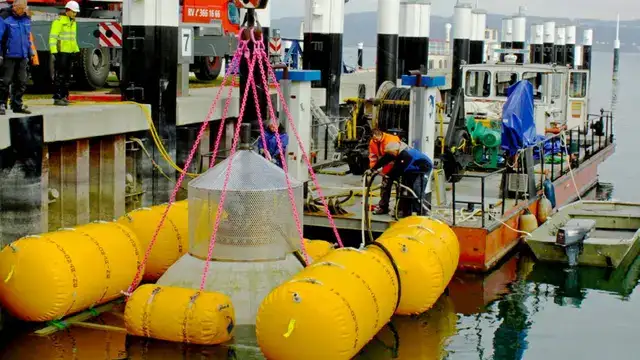As the world races toward a sustainable energy future, one of the biggest challenges remains: how to store renewable energy efficiently and at scale. Germany’s Fraunhofer Institute has unveiled an innovative solution that taps into the power of the deep sea to store electricity – the StEnSea (Stored Energy in the Sea) project. This cutting-edge technology could transform the way we balance energy grids and manage renewable power worldwide.
The Challenge of Renewable Energy Storage
Renewable energy sources like wind and solar are inherently intermittent – the sun doesn’t always shine, and the wind doesn’t always blow. To maintain a stable electricity supply, excess energy generated during peak times must be stored and released when demand rises. Traditional energy storage methods, such as batteries and pumped hydroelectric storage, have limitations including high costs, land use, and environmental concerns.
What is StEnSea?
StEnSea offers a novel approach by using the ocean itself as a natural energy reservoir. The system consists of giant hollow concrete spheres, roughly 9 meters in diameter and weighing 400 tons, submerged at depths of 600 to 800 meters under the sea. These spheres act as underwater energy storage units, using the immense water pressure at such depths to store and release energy.
How Does It Work?
The principle behind StEnSea is based on pumped hydro storage, but instead of two reservoirs at different elevations, it uses the ocean’s natural pressure gradient:
-
Charging (Storing Energy): When there is surplus electricity (for example, from solar or wind farms), pumps inside the sphere expel seawater against the external pressure, effectively “emptying” the sphere and storing energy as potential energy.
-
Discharging (Releasing Energy): When electricity is needed, seawater flows back into the sphere, driven by the surrounding water pressure. This inflow powers turbines connected to generators, converting the potential energy back into electricity to feed the grid.
Development and Testing
The concept was first proposed in 2011 by physicists Prof. Dr. Horst Schmidt-Böcking and Dr. Gerhard Luther. Fraunhofer IEE, along with industry partners, has since developed and tested smaller-scale prototypes in Lake Constance, Germany. The next milestone is a full-scale prototype planned for deployment off the coast of Long Beach, California, by the end of 2026. This pilot will demonstrate the system’s ability to generate 0.5 MW of power with a storage capacity of 0.4 MWh, enough to power a typical household for about two weeks.
Advantages of StEnSea
-
Minimal Land Use: Unlike traditional pumped hydro, which requires large reservoirs and specific topography, StEnSea spheres utilize deep ocean spaces, preserving valuable land.
-
Scalability and Flexibility: The spheres can be installed in various deep-sea locations worldwide, including coastal areas with existing renewable infrastructure.
-
Long Lifespan: The concrete spheres are designed to last 50-60 years, with maintenance only needed for mechanical components every 20 years.
-
Cost-Effectiveness: Estimated storage costs are competitive, around 5.1 cents per kWh, making it an economically viable solution for grid-scale energy storage.
Environmental Impact
By situating storage underwater, StEnSea minimizes ecological disruption compared to land-based facilities. The project also leverages existing marine environments without requiring new dams or reservoirs, reducing habitat loss and landscape alteration.
The Future of Energy Storage
The successful deployment of the full-scale StEnSea prototype could mark a turning point in renewable energy storage technology. With a global potential estimated at over 800,000 GWh, this approach could power millions of homes sustainably, enabling greater integration of renewables into the energy mix and supporting the transition to a low-carbon future.









